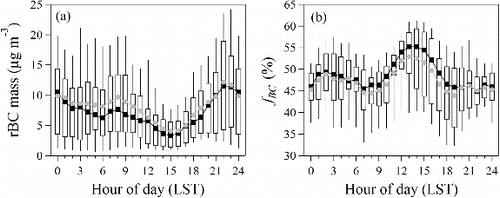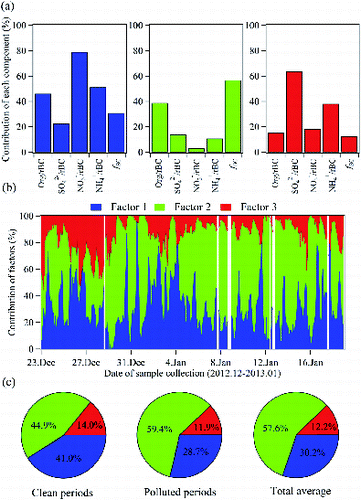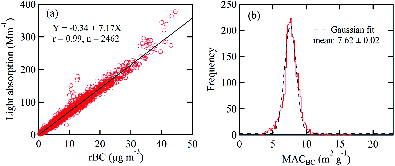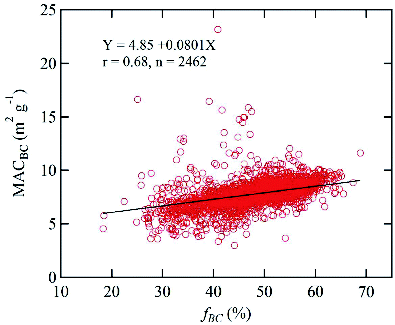Figures & data
Table 1 A summary of the instrumental analysis during the measurement campaign
Table 2 Summary of rBC concentrations and number fraction of thickly coated rBC particles (fBC) as well as related chemical concentrations of particulate matter
FIG. 1. (a) Hourly variations of rBC mass concentration and (b) number fraction of thickly coated rBC particles (fBC). In each panel, the lower and upper edges of the boxes denote the 25% and 75% percentiles, respectively. The black and grey lines indicate the median and mean values, with vertical bars showing the 10th and 90th percentiles. LST stands for local standard time.

FIG. 2. (a) Contributions of organic/rBC, SO42−/rBC, NO3−/rBC, NH4+/rBC, and fBC in the three-factor PMF model; (b) time series of factor contributions to the fBC; (c) contributions of each factor to fBC during clean and polluted periods.

FIG. 3. (a) The linear relationship between light absorption and rBC concentration during the campaign. (b) Frequency distribution of rBC mass absorption cross section (MACBC).

Table 3 Comparison of mass absorption cross sections of BC (MACBC) from different studies
FIG. 4. The rBC mass absorption cross section (MACBC) as function of number fraction of thickly coated rBC (fBC).

